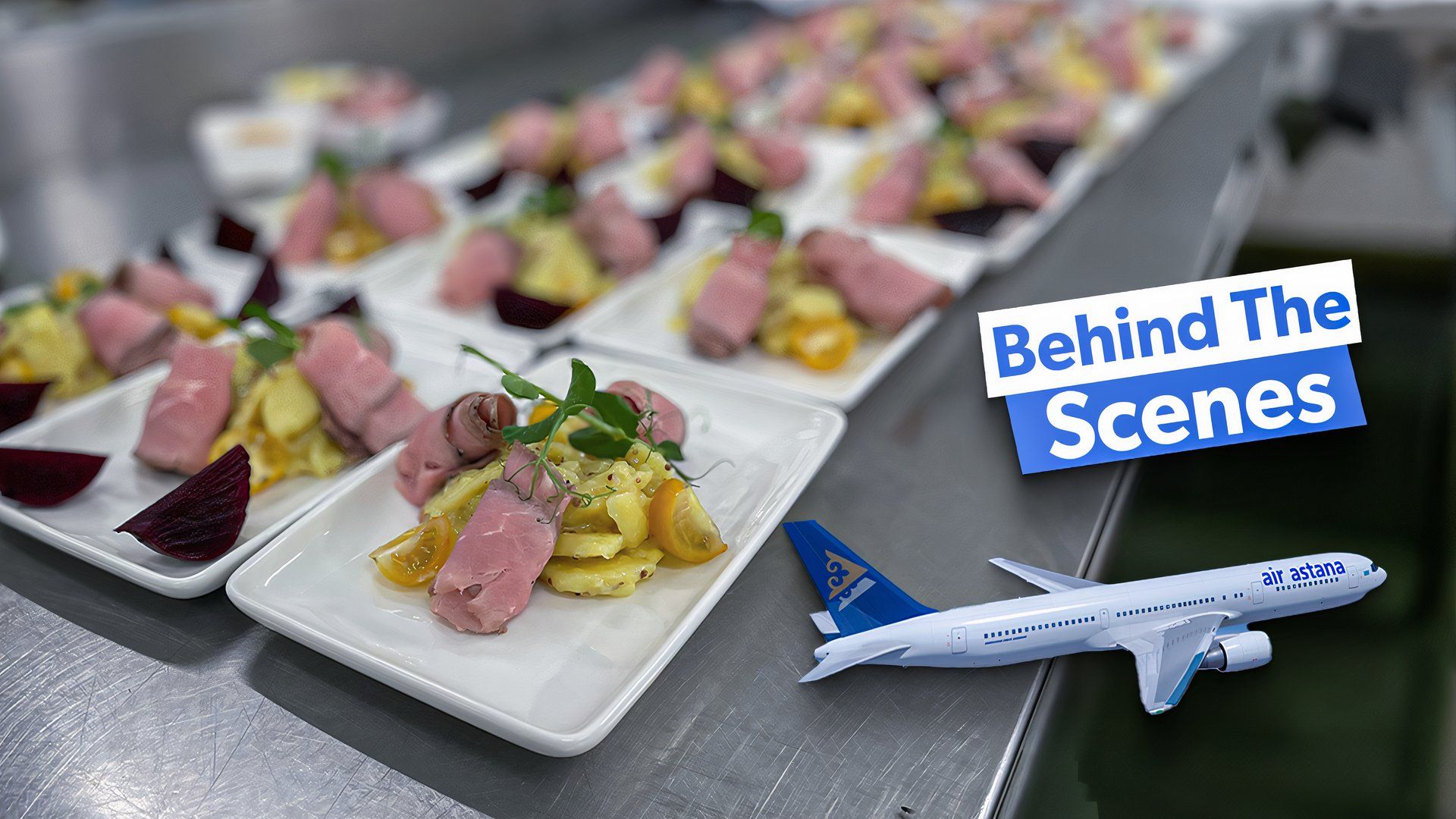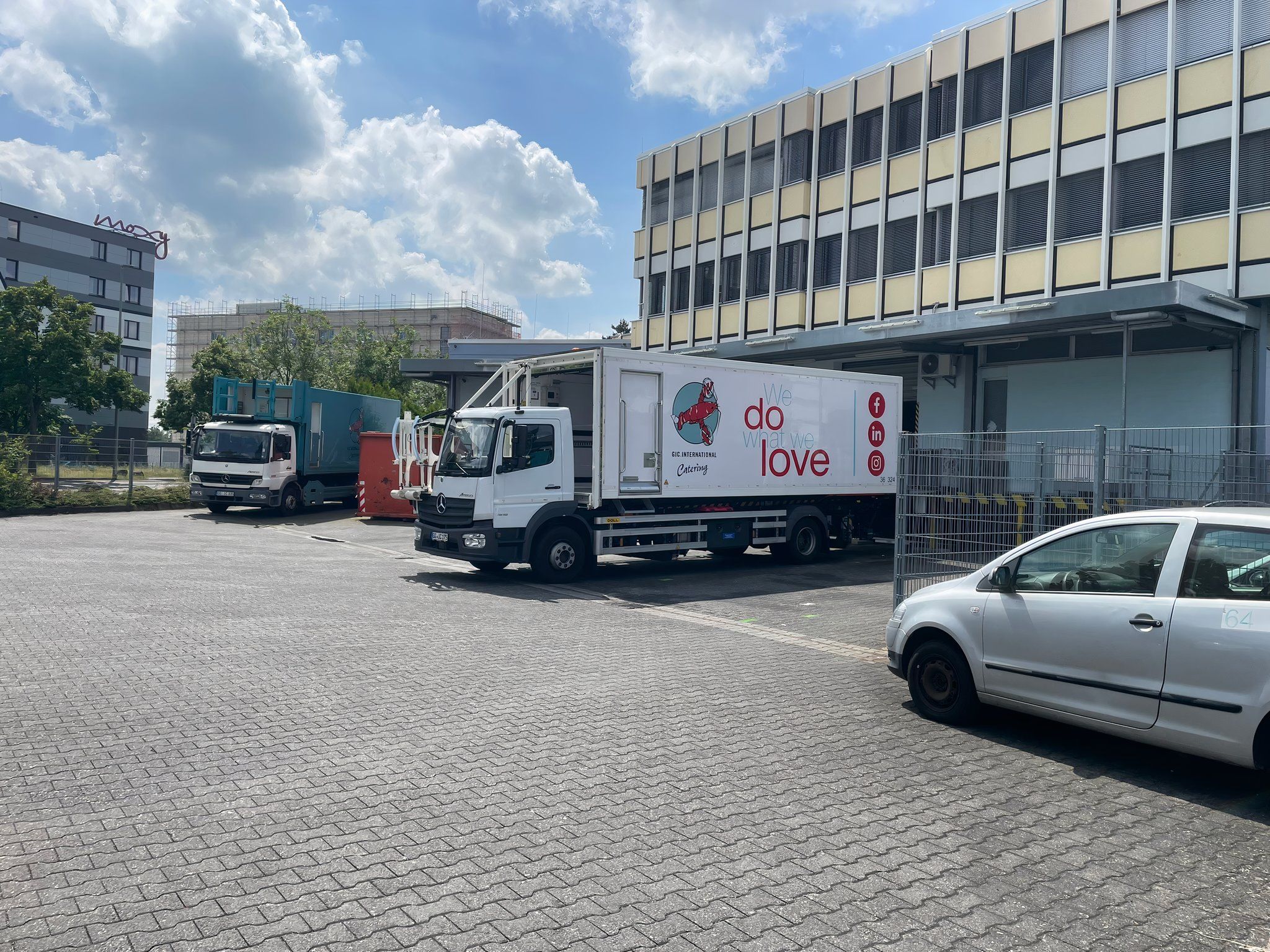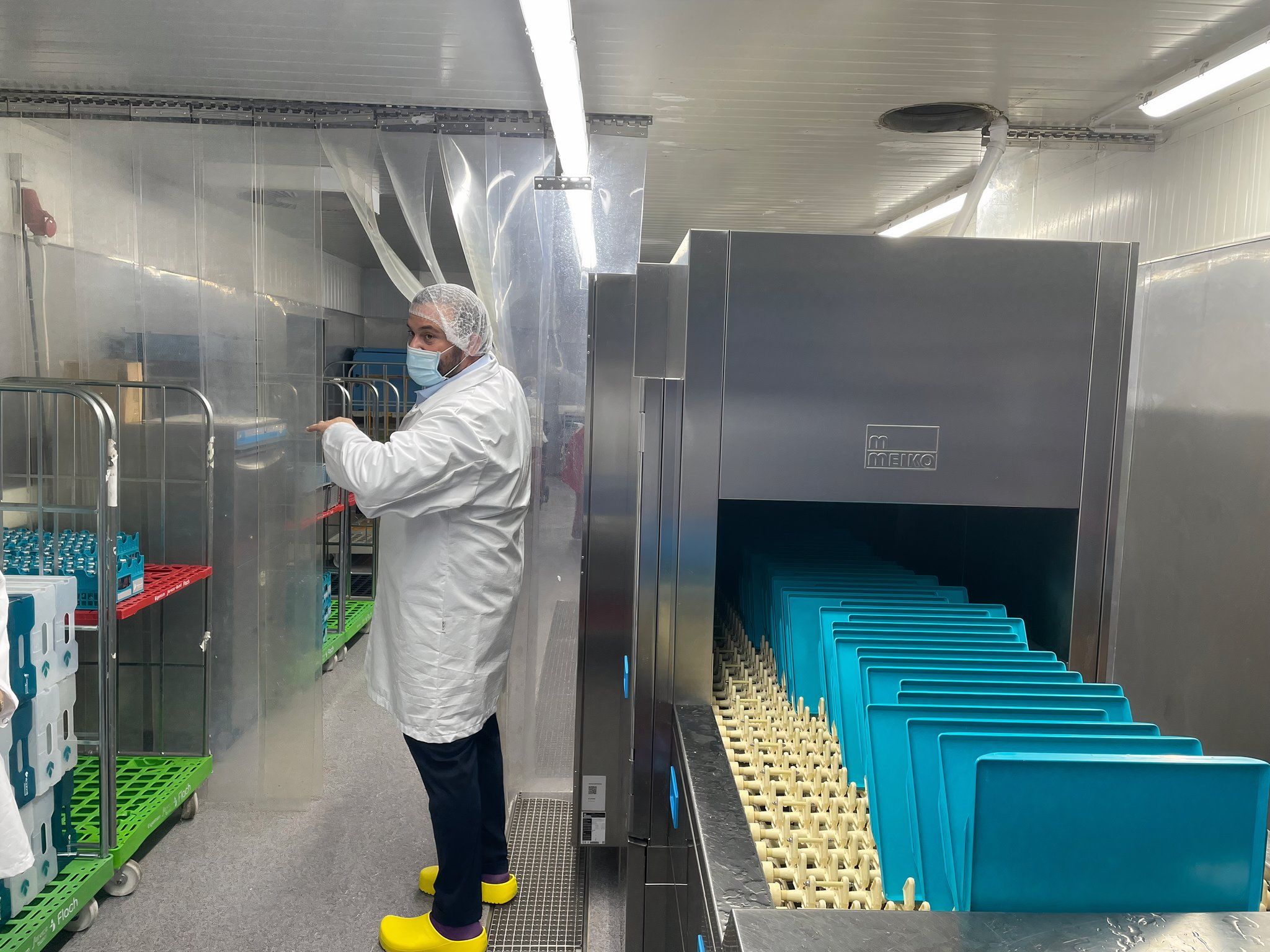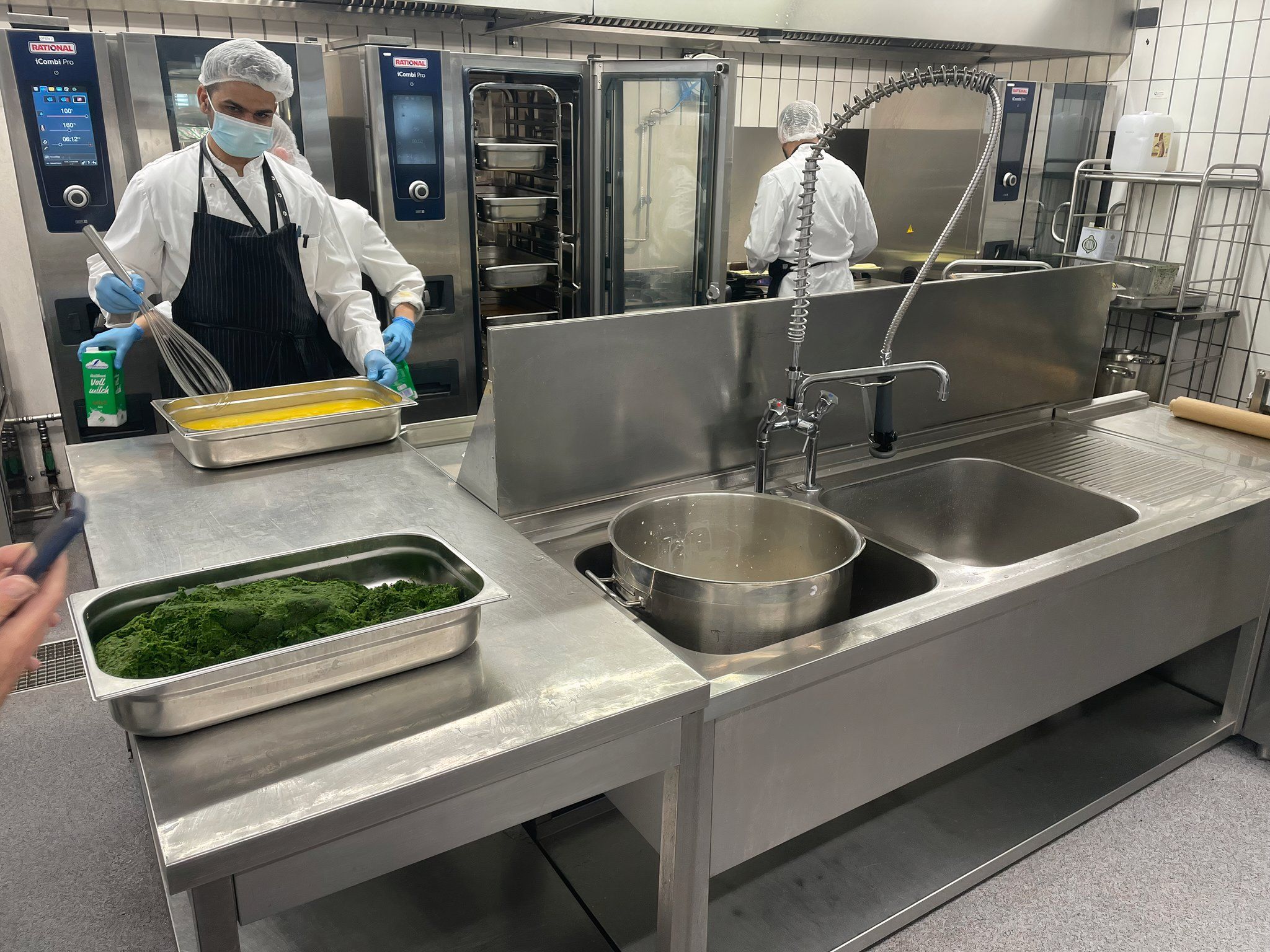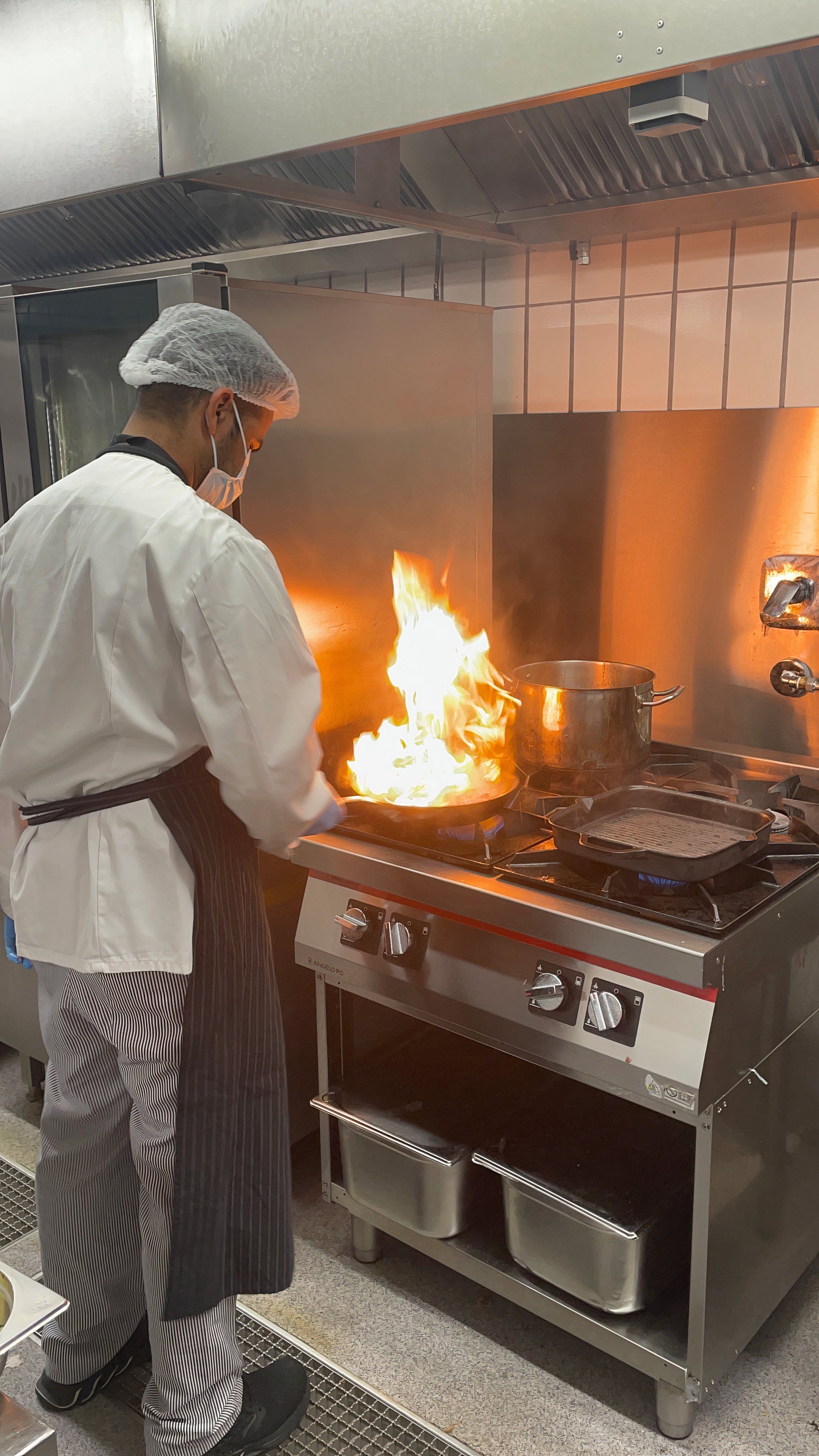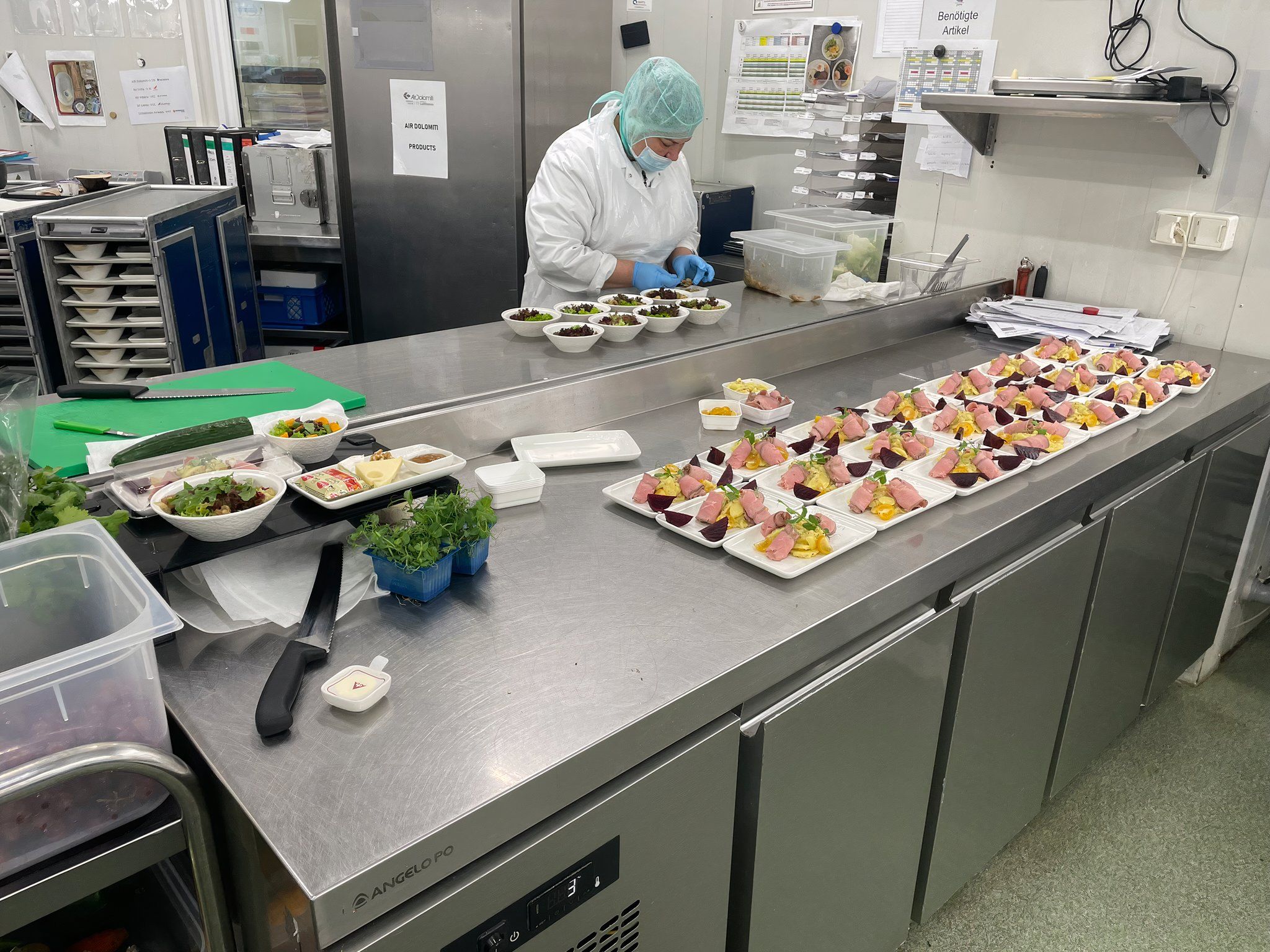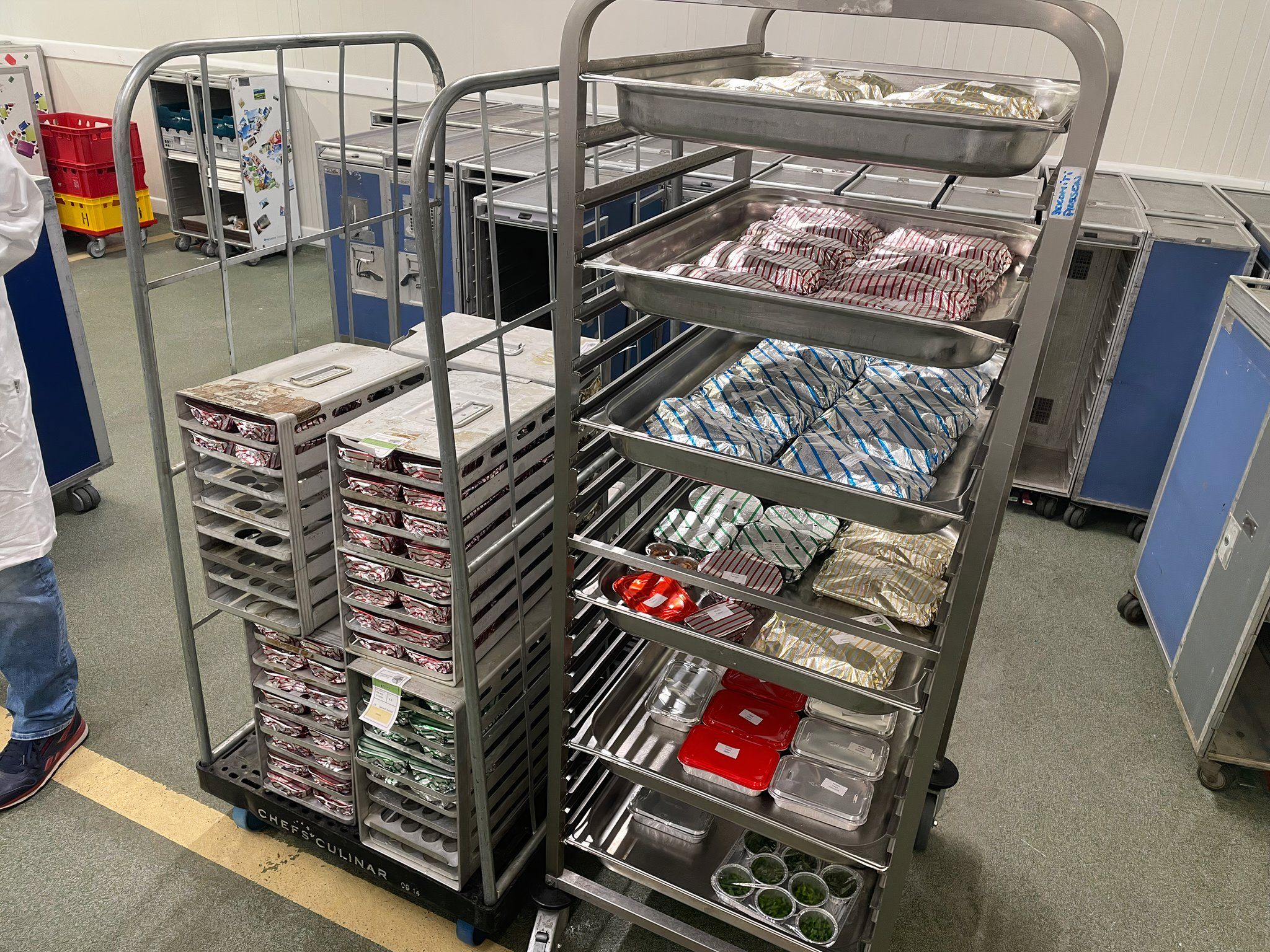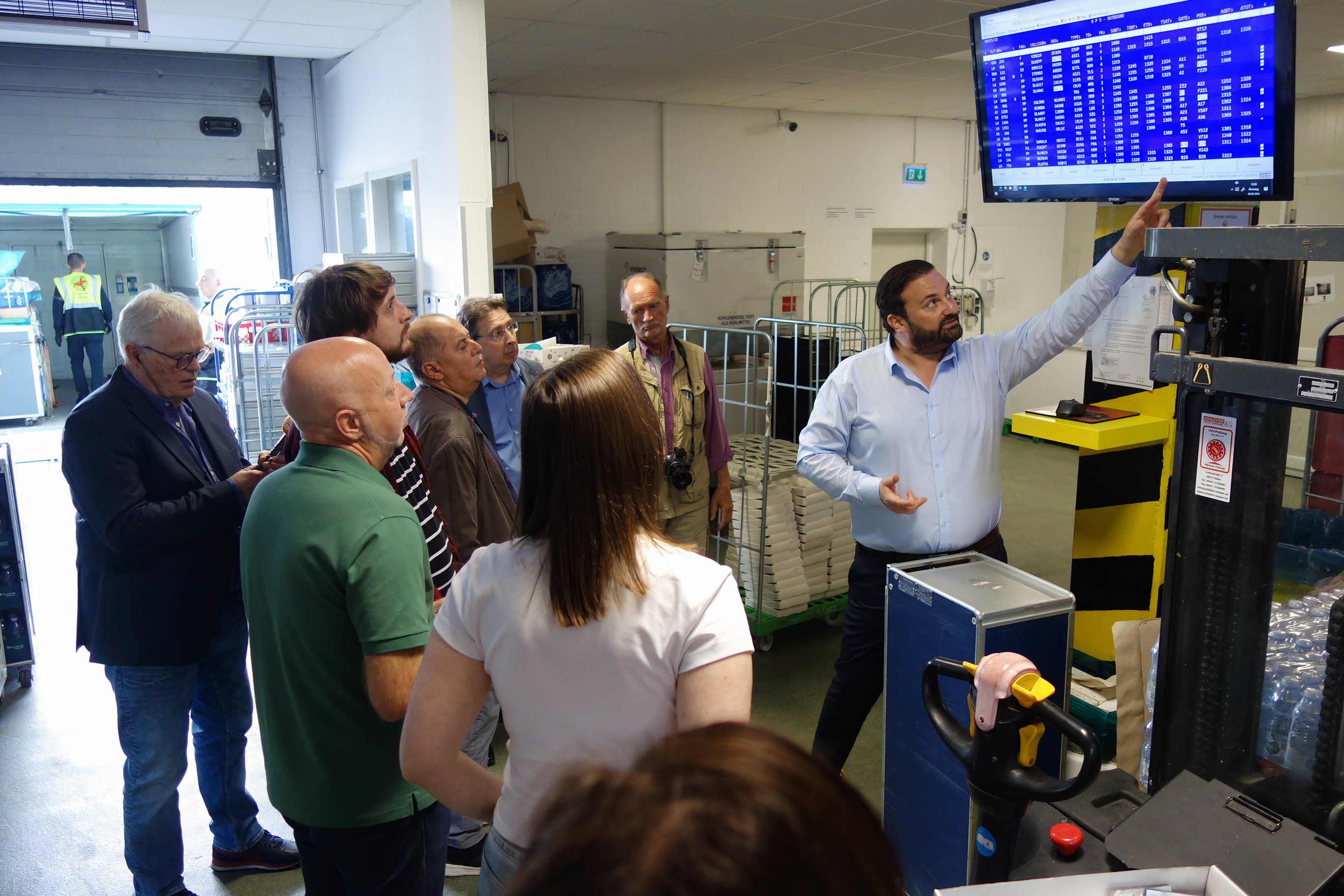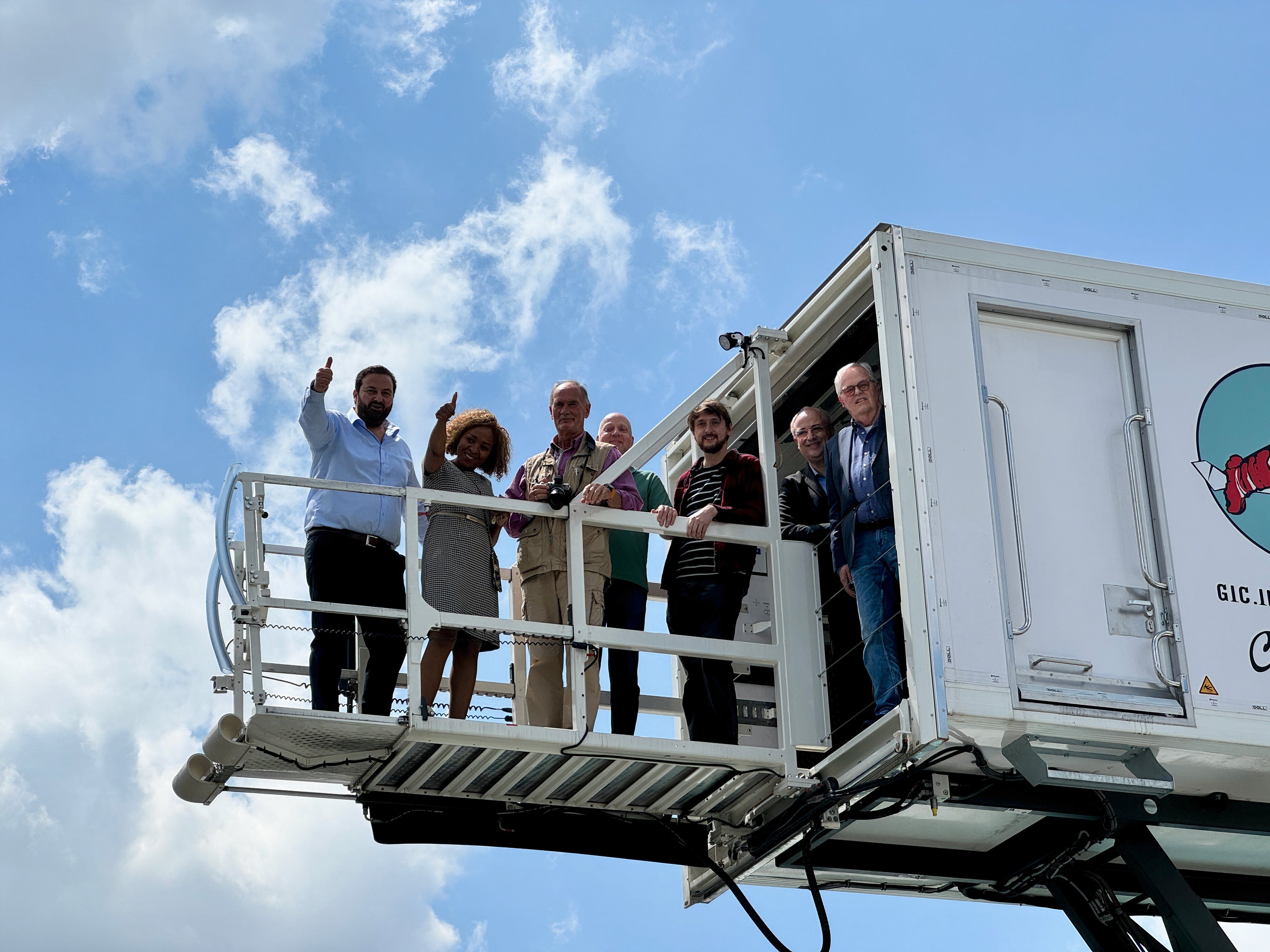Summary
- GIC International Catering provides meals for Air Astana and 17 other airlines ex-Frankfurt.
- Its boutique nature enables immediate decision-making and streamlined airline feedback.
- Halal and non-halal meals are prepared separately with stringent hygiene protocols followed.
If you fly on
![]() Air Astana
Air Astana
from
![]() Frankfurt Airport
Frankfurt Airport
, you will get a couple of meals on the flight to Kazakhstan. These flights, and the ex-FRA flights of 17 other airlines, are catered for by GIC International Catering, a boutique aircraft caterer located 3 km from the airport.
Simple Flying was invited to visit GIC International Catering as a guest of Air Astana to see what goes into making the food consumed onboard a flight.
The first thing that is immediately apparent about GIC International is how its boutique nature allows it to be much more reactive to customer needs. Göksel Yildirim, the company’s Managing director, and Bongi Tshazi, the company’s Commercial Director, showed us around the facilities.
Photo: Tom Boon | Simple Flying
Yildirim explained that when a decision needs to be made, there isn’t the need to wait for emails back and forth with head office as he can instantly make them himself. He also remarked that airline feedback was also streamlined, as the airlines can contact him directly with any queries or criticism. He can then immediately take action.
Entering GIC International Catering
When you arrive at GIC, you wouldn’t think you are approaching a facility that makes 18,000 meals daily. The exterior of the building is relatively unassuming, other than a collection of branded high loaders parked outside.
Photo: Tom Boon | Simple Flying
Inside are the offices and catering facilities of the family-owned and operated company. As a catering establishment, hygiene is taken incredibly seriously. Before entering, we had to remove all jewelry (including wedding rings and watches), don personal protective equipment such as hairnets and masks, and finally undergo a disinfection process. This included washing and disinfecting hands and cleaning the soles of shoes.
It isn’t just workers and visitors who need to undergo the process. GIC also collects dirty dishware from incoming flights. This is fed through a state-of-the-art dishwasher before going into storage at the facility, ready for when it is needed to plate meals.
Photo: Tom Boon | Simple Flying
Goods also enter the facility at this point before being placed in various fridges, freezers, and storage rooms. In total, the facility has four walk-in freezers and 14 walk-in fridges. Aviation safety protocols must also be followed because these meals will go onto airplanes.
First, the ingredients are cooked
The facility is broadly split into two. On one side, in the older part, there are kitchens for preparing the food. While the facility itself is older, GIC took the initiative to refurbish it during the COVID-19 pandemic, using its high-loader drivers for the process and thus keeping them in work.
Photo: Tom Boon | Simple Flying
The kitchen is also split into two parts. GIC is proud that it offers halal catering in addition to non-halal products. All halal products are made and kept separately from non-halal products. It was explained that even different cleaning products are used, as many cleaning chemicals contain alcohol, which is forbidden for those following a halal diet.
During our visit, preparations were underway for Air Astana’s 20:00 Boeing 767 departure. One thing that GIC particularly prides itself on is that all meals are fresh, not frozen. This means that they are typically made on the day of the flight.
Photo: Tom Boon | Simple Flying
Different meal components each have a different shelf life. Air Astana is one of the few airlines to serve soup onboard, and it is always the last thing loaded onto the catering trucks to ensure that it is fresh and just the right temperature. Several meal components, including Air Astana’s garlic bread, were being prepared then. Once the individual components are cooked, they are placed into temperature-controlled storage until it is time to plate them.
Then the meals are plated up
The newer half of the building is where meals are plated. Economy and premium meals are assembled in separate sections. During our visit, the Air Astana business class starters were being created. This was a potato salad with rolls of thinly sliced beef and beetroot. Two salads and a cheese plate accompanied the dish.
Photo: Tom Boon | Simple Flying
To ensure consistency between each dish, the Head Chef prepared a single sample beforehand so that each plate could be compared against it. This is called a “golden sample”. On the other side of the kitchen, desserts for other airlines were being prepared.
The process looks relatively similar, though much less glamorous when preparing economy meals. Given the difference in scale, creating these is simpler to make it quicker. While we were visiting, a chicken ragout with rice was being prepared for the Air Astana economy passengers. This consisted of chicken ragout with a creamy tomato sauce, steamed jasmine rice, and garlic-flavoured kenia beans.
Once the meal has been completed, the metal tray is covered with foil, with a color matching the contents of the food as follows,
- Blue – Fish/Seafood
- Red – Beef/Veal
- Yellow – Chicken/Poultry
- Green – Vegetarian
- Silver – Special Meals
Photo: Tom Boon | Simple Flying
Each meal will be placed in the onboard oven to bring it to temperature before being served to passengers. However, all of the trays, minus the hot meals, are also prepared on the ground before being loaded into standard-sized catering trolleys.
Once this process has been completed, the various components are brought together in a temperature-controlled room at the front of the building. All Air Astana products would be kept together to minimize the chance of forgetting one component.
Getting the food to the aircraft
The next room is home to those responsible for getting the food from the facility to the aircraft. Here, high-loader drivers have access to an online terminal where they can see the gate allocated to each flight arriving at Frankfurt.
Photo: Claasen Communication
Once the flight they are interested in gets closer, they will load the products for their flight onto the temperature-controlled loader before driving to the airport and out to the aircraft. Here, the driver lines the loader up with the plane before raising the platform and moving the food onto the aircraft.
Photo: Tom Boon | Simple Flying
While we could not accompany meals to the aircraft, we could ride up in the loader, which took us up to 6.1m above the car park. According to Boeing’s “767 Airplane Characteristic for Airport Planning,” the Air Astana’s
Boeing 767
front door height is between 4.14 and 4.50m off the ground, while the rear door varies between 3.99 and 4.39m, depending on the current loading activities.
Photo: Claasen Communication
After the tour of the catering facility, it was time to tase the meals for ourselves up in the offices of GIC International Catering with key figures from Air Astana in Germany. Stay tuned for a separate review of the meal!
Did you realise how much work goes into

